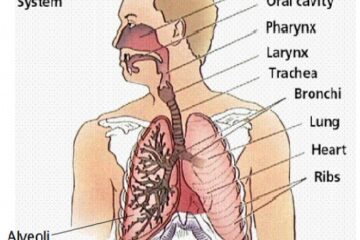The Fruit – Morphology of Flowering Plants
The Fruit – Morphology
The fruit is a characteristic feature of flowering plants. It is a mature or ripened ovary that develops after fertilization. Sometimes fruit also develops without fertilization, which is called a parthenocarpic fruit.

Parts of fruit
Type of fruits:
parthenocarpic fruit: The fruit develops without fertilization, and it is a seedless fruit or unviable seeds. e.g. Banana. grapes, etc.
Pseudocarpic fruit: (also called false fruit): It is not a true fruit as it develops from parts other than the ovary, such as the thalamus of an apple, pear, etc. these are called pome fruits. e.g. Pyrus, Dillenia, Physalis, etc.
True fruits: The fruits develop from the ovary. There are three categories of true fruit
- Simple fruit
- Aggregate fruit also called etaerio
- Multiple or composite fruit or Infructescence

Type of fruits
1. Simple fruit
Simple fruits develop from a whole syncarpous ovary. The simple fruits are of two types:
- Dry fruit
- Fleshy or succulent fruits.
Dry fruit: These fruits consisting dry pericarp which is not distinguished into epicarp, mesocarp, and endocarp. The seeds are enclosed by a dry pericarp. Dry fruits may be Dehiscent, indehiscent, and schizocarpic types.
-
- Dehiscent fruit: The pericarp splits on the maturity of the fruit, which releases and disperses seeds. These may be:
- Legume or pod- eg. fruits of Leguminosae,
- Follicle: develops from the carpellary ovary, e.g. cloltropis
- Siliqua: A long cylindrical fruit develops from bicarpellary ovary with parietal placentation and the presence of a replum. (false septae), e.g. Brassica (Cruciferae)
- Silicula: e.g. Candytuft (Ilberis amara).
- Capsule: e.g. hibiscus Esculenthus, Grossipium, situ- cotton.
- Indehiscent dry fruit: the pericarp does not split on the ripening of fruit. The seeds are released by decomposition or digestion of the pericarp. these may be:
- Achene: e.g. Mirabilis
- Cypsela: e.g. Compositae
- Caryopsis: e.g. members of family Graminae
- Samara: e.g. Holoptelea, Utrica, etc.
- Nut: Litchi (litchi sinensis), Cashewnut (Anacardium), etc.
- Schizocarpic dry fruit: These fruits split into one or two-seeded segments, called cocci or mericarp.
- Lomentum: e.g. Mimosa pudica, Arachis hypogea.
- Cremocarp: e.g. Coriandrum sativum
- Dehiscent fruit: The pericarp splits on the maturity of the fruit, which releases and disperses seeds. These may be:
Fleshy or succulent fruits: These fruits are with thick fleshy pericarp that is distinguished into three layers i.e. the outer ‘epicarp’, middle ‘mesocarp’, and inner layer ‘endocarp’. These are of the following type:
-
- Drupe: One seeded fruit is enclosed by a stony endocarp. The mesocarp is fleshy and edible. e.g. Mangifera or fibrous, peach, cherry, Cocos nucifera.
- Berry or Bacca: These fruits are developed by mono or multicarpellary syncarpous In these fruits no hard parts except seeds. e.g. Tomato (Lycopersicon esculentum), Brinjal.
- Pepo: e.g. Pumpkin, cucumber, cucurbits, etc.
- Pome: Apple and pear.
- Balausta: e.g. Pomegranate
2. Aggregate fruit also called etaerio
These fruits developed from an apocarpous multi carpellary ovary. Each independent carpel of the ovary develops as a fruitlet. e.g. Strawberry, Clematis, Naravelia, Custard apple, Michelia, Rubus idaeus.
3. Multiple or composite fruit or Infructescence
These fruits are developed from the entire inflorescence. These are of two types:
- Sorosis: develops from catkin type of inflorescence, e.g. Jackfruit (Artocorpus integrifolia), Pineapple (Ananas sativus), Mulberry (Mous alba).
- Syconus: This type of fruit develops from hypanthodium type of inflorescence. E.g. Ficus.

Type of fruits and their edible parts
You can also read:
- The Inflorescence
- Morphology of leaf
- Morphology of stem
- Morphology of roots
- Reproduction in flowers
- Morphology of Flower
Thank you



5 Comments
Floral Diagram and formula - PCSSTUDIES - Biology · May 15, 2021 at 5:18 pm
[…] Fruit: legume; […]
Reproduction in Organisms - PCSSTUDIES - Biology · November 24, 2021 at 3:49 pm
[…] The Fruit – Morphology […]
Sexual Reproduction in Flowering Plants - PCSSTUDIES Biology · June 14, 2022 at 6:31 pm
[…] Events found are the development of endosperm and embryo and maturation of the ovule into seed and ovary into a fruit. i.e. ovule makes seed and ovary make fruits. […]
Transport in Plants - PCSSTUDIES Botany · May 26, 2023 at 8:59 pm
[…] Fruit Morphology […]
Plant kingdom-Angiosperms - PCSSTUDIES - Biology · July 11, 2023 at 9:14 pm
[…] *** Fruit is a mature, fertilized ovary of a plant. […]